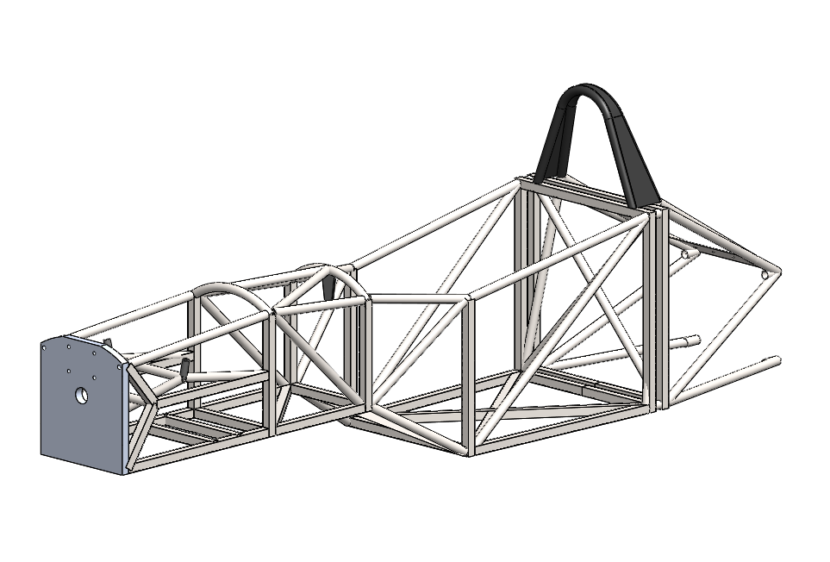With an overall layout coming closer to completion (bare in mind 99% of it will change once we get down into the nitty gritty) we’ve added some more tubes in place to take suspension and crash structure loads. Our initial suspension layout went against our ethos of having a chassis that was relatively straight forward to manufacture. Each front wishbone clevis mounting point was on a different plane, and this being the first chassis we’re going to manufacture in house, we wanted it to be simple to make and repair. And that means keeping suspension clevis mounting points on the same plane.
The front bulkhead (Bulkhead A) is actually a machined plate of aluminium. Onto this will mount the front crash structure/nose, the steering rack, the damper clevis’ and anything else we can think of (anti-roll bar). Mounting will be via 14mm bolts. It’s between bulkhead A and bulkhead B that there is a lot of complexity and something we’re not entirely happy with. Originally the rocker assembly was mounted around the top tube, but manufacturing this was going to be difficult, as well as leading to more complex bodywork. Lowering this meant we used available space as well as bringing the centre of gravity down a bit. The downside is that there were no tubes to take the loads. This is why we have a bit of a mess of tubes in this area at the moment.
We have also changed the lower chassis tubes to square tube, purely so that a floor plate can be attached easily. The weight penalty of square tube is outweighed by the ease of securing a floor to something that is already flat. And the same goes for the front wishbone mounting points. Using square tubes means we can weld in threaded bosses easily and have a nice flat surface for them to mate up to. Bulkheads C and D are straight forward.
Bulkhead E is more difficult. This take the main load of the roll hoop and as such we will space these further apart so that the roll hoop attaches directly to the double bulkhead rather than to separate tubes.
Some of you might be wondering why we are showing this chassis as it is, rather than a finalised design. And that’s because this is all part of the design process. We will probably go through 50 different iterations of the chassis after we’ve come to a main design direction and start with the full analysis work, but more on this at a later date. We’re not there yet.

